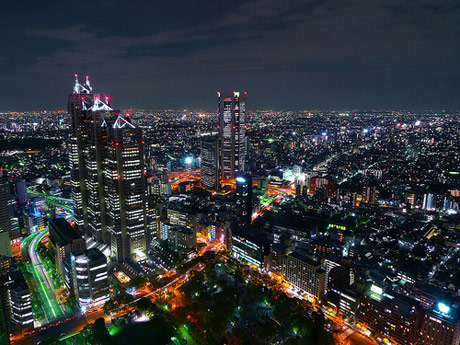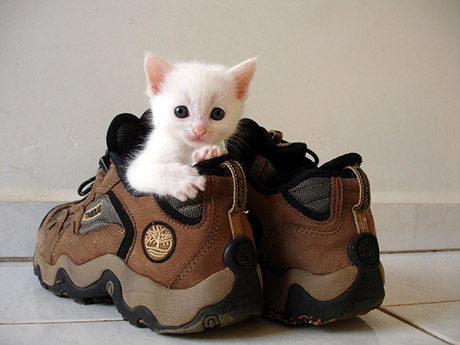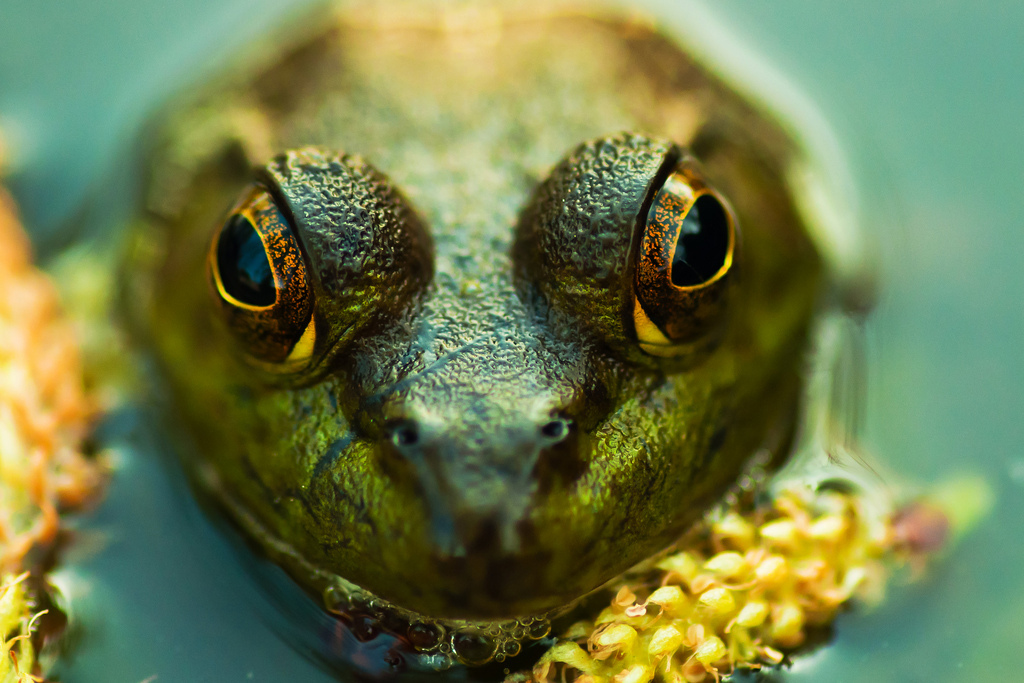
Digital Photography School has put together a fantastic collection of links for their best articles on macro photography. If you’re a photography hobbiest, it’s well worth browsing through the articles.
Photo credit: Macro look of the Green frog by Rosan Nepal.
]]>
Photo by Micky Wiswedel
I’m always on the lookout for stock photography resources, and I tend to bookmark any stock photo site that shows any potential. But let’s be honest, client budgets aren’t what they used to be. Sites like Getty and Masterfile are just too expensive. At the other end, ThinkStock, Shutterstock and iStockPhoto are affordable but have a rather poor selection of images for high-end advertising use; they’re overloaded with cliché images with poor cropping and mediocre subject matter.
Enter Stocksy, a curated royalty free stock photo site run by the photographers themselves. By curated I mean that you can’t simply submit photos for inclusion on the site like you can at other sites. You have to be invited by the photographers that run the site. This ensures high-quality images, not high volume.
In browsing through the site, I found numerous images that could easily be dropped into a national ad campaign without having to search through hundreds of pages of search results or spend an hour correcting/changing colors, focus or figuring out how to clone out frivolous background matter.
There are plenty of high-concept images, as well as everyday subject matter. I particularly like the site because the images appear to have been shot for a reason—with the color saturation, focus and cropping kept in mind.
The image pricing at Stocksy is reasonable and on par with other sites like iStockPhoto. Single image prices range from $10 for a 12×18 72dpi web size, to $100 for an extra large 10×14 300dpi size.
]]>
Digital Photography School offers a few tips for a better autofocus
Sometimes the autofocus on your DSLR camera can be really annoying. For some shots it’ll focus on the right part of your subject, but then the very next shot it may choose to focus on something far and away into the background.
Steve Berardi from PhotoNaturalist talks about three ways to get better control of autofocus in his guest-post at Digital Photography School.
]]>
Shooting landscapes is all about the setup (a little HDR treatment works sometimes, too!)
The recipe for success however is less obvious. Unless of course you read this great article at Digital Photography School on photographing the perfect landscape.
]]>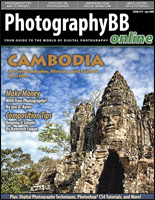 Digital photography fans can download the latest issue of PhotographyBB e-magazine in PDF format. PhotographyBB is a free online magazine composed by a hardworking team of volunteer contributing authors whose goal is to teach beginners all about digital photography and image processing. The June 2009 edition features articles on photography techniques and issues facing today’s digital photographer. Readers will learn tips on composition and how keeping things simple can lead to great photography.… Read the rest
]]>
Digital photography fans can download the latest issue of PhotographyBB e-magazine in PDF format. PhotographyBB is a free online magazine composed by a hardworking team of volunteer contributing authors whose goal is to teach beginners all about digital photography and image processing. The June 2009 edition features articles on photography techniques and issues facing today’s digital photographer. Readers will learn tips on composition and how keeping things simple can lead to great photography.… Read the rest
]]> Digital photography fans can download the latest issue of PhotographyBB e-magazine in PDF format. PhotographyBB is a free online magazine composed by a hardworking team of volunteer contributing authors whose goal is to teach beginners all about digital photography and image processing. The June 2009 edition features articles on photography techniques and issues facing today’s digital photographer. Readers will learn tips on composition and how keeping things simple can lead to great photography. The issue also examines how to overcome “photographer’s block” when lack of inspiration occurs. Included is also a Photoshop® tutorial on creating an urban “grunge” type effect for dramatic impact.
]]>
Digital photography fans can download the latest issue of PhotographyBB e-magazine in PDF format. PhotographyBB is a free online magazine composed by a hardworking team of volunteer contributing authors whose goal is to teach beginners all about digital photography and image processing. The June 2009 edition features articles on photography techniques and issues facing today’s digital photographer. Readers will learn tips on composition and how keeping things simple can lead to great photography. The issue also examines how to overcome “photographer’s block” when lack of inspiration occurs. Included is also a Photoshop® tutorial on creating an urban “grunge” type effect for dramatic impact.
]]>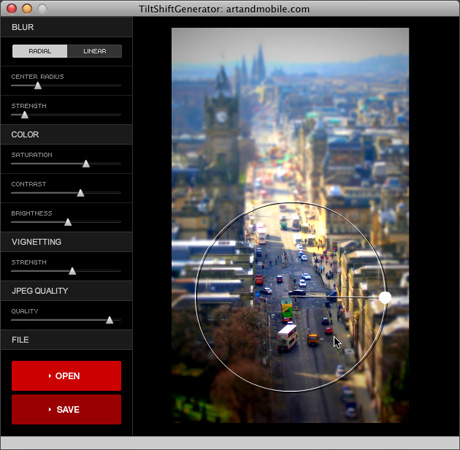 While the control you get with this Air app pales in comparison to Alien Skin Bokeh, the tools you get are more than adequate for simple tilt-shift simulation. You have control over radial or linear plane blurring, strength of blur, color saturation and contrast, and vignetting. Simply drag your image into the preview area and click where you want the focus area to be in the image. The rest is just playing around to get the effect you want.
While the control you get with this Air app pales in comparison to Alien Skin Bokeh, the tools you get are more than adequate for simple tilt-shift simulation. You have control over radial or linear plane blurring, strength of blur, color saturation and contrast, and vignetting. Simply drag your image into the preview area and click where you want the focus area to be in the image. The rest is just playing around to get the effect you want. 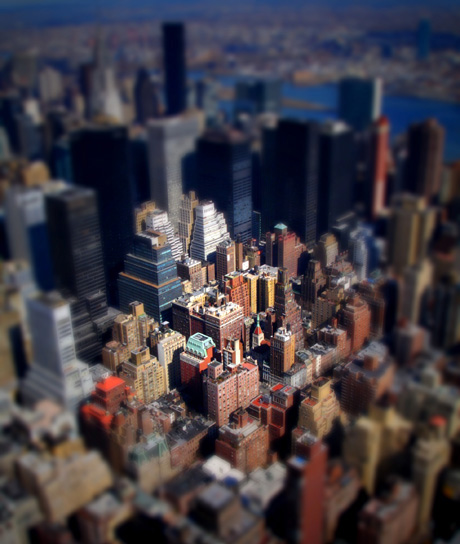 The results are fairly decent for most needs, especially images destined for the Web (as seen in the image above). High resolution print images slow the app down quite a bit, though I found it to still work at acceptable speeds. TiltShift Generator works admirably for a free application. I’m not a huge fan of Adobe AIR applications, but in this case, it’s really all that is necessary.
]]>
The results are fairly decent for most needs, especially images destined for the Web (as seen in the image above). High resolution print images slow the app down quite a bit, though I found it to still work at acceptable speeds. TiltShift Generator works admirably for a free application. I’m not a huge fan of Adobe AIR applications, but in this case, it’s really all that is necessary.
]]>| F-# | Aperture Size | Shutter Speed | Depth of Field |
| Higher # | Smaller | Slower | Wider |
| Lower # | Larger | Faster | Narrower |
Lens aperture settings are displayed as 1:X or f/X.X. So a lens with the largest aperture would be 1:1.0 or f/1.0. Because these larger aperture lenses are so desirable, they typically cost much more than a lens with a smaller aperture. Why are they desirable? Because they let more light in! That means if you typically do a lot of indoor photography and rely on your flash, these lenses will produce a much more evenly-lit image, rather than your subject being brightly lit and the background nearly blacked-out completely. For more information about camera lenses, I recommend taking a look at this excellent article at Cambridgeincolour.
]]> HDR, or High Dynamic Range Imaging seems to be all the rage these days. HDRI is described as:
HDR, or High Dynamic Range Imaging seems to be all the rage these days. HDRI is described as:In image processing and photography, high dynamic range imaging (HDRI) is a set of techniques that allows a greater dynamic range of exposures (the range of values between light and dark areas) than normal digital imaging techniques.
Digital Photography School has a fantastic Introduction to HDR Imaging, covering the methods used to achieve the effect.… Read the rest
]]> HDR, or High Dynamic Range Imaging seems to be all the rage these days. HDRI is described as:
HDR, or High Dynamic Range Imaging seems to be all the rage these days. HDRI is described as:In image processing and photography, high dynamic range imaging (HDRI) is a set of techniques that allows a greater dynamic range of exposures (the range of values between light and dark areas) than normal digital imaging techniques.
Digital Photography School has a fantastic Introduction to HDR Imaging, covering the methods used to achieve the effect. Photo by Wil Hybrid
]]>

